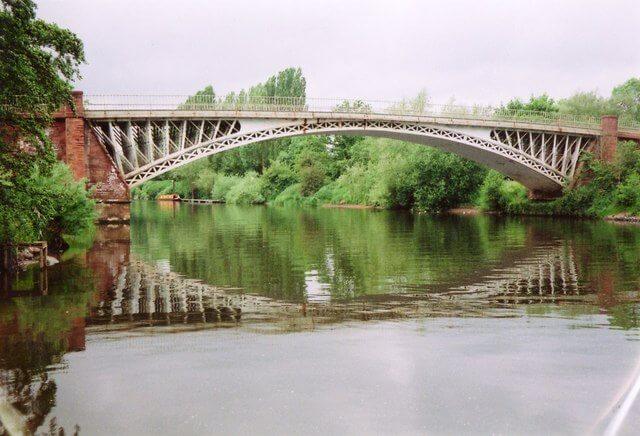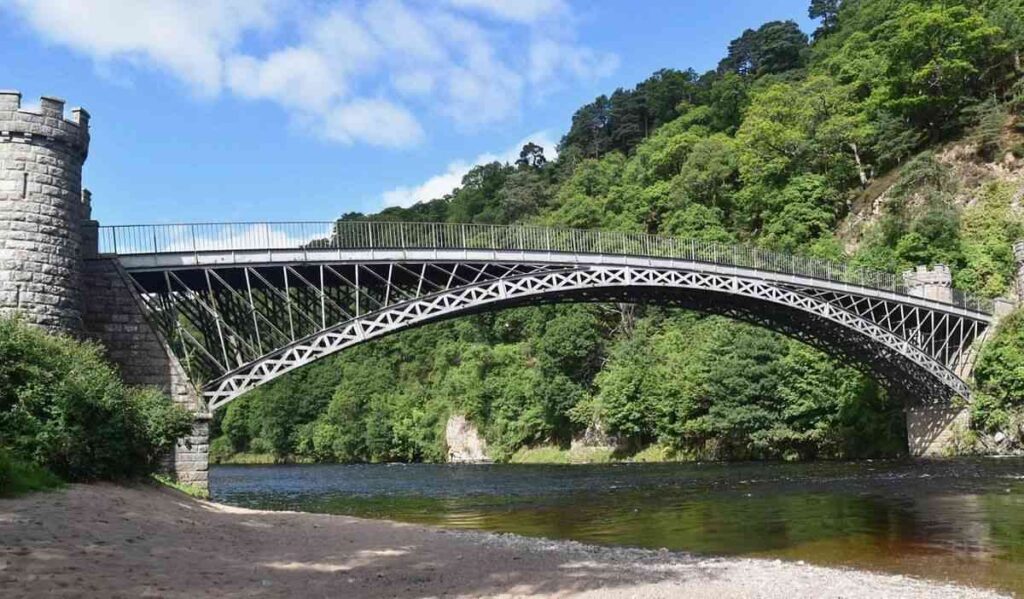…and before steel, there was cast-iron.
Thomas Telford (9 August 1757 – 2 September 1834) was a Scottish civil engineer. After establishing himself as an engineer of road and canal projects in Shropshire, he designed numerous infrastructure projects in his native Scotland, as well as harbours and tunnels. He was a prolific designer of highways and related bridges.

Photo: David Kitching
In 1790 he designed a bridge carrying the London–Holyhead road over the River Severn at Montford, the first of some 40 bridges he built in Shropshire, including major crossings of the Severn at Buildwas, and Bridgnorth. The bridge at Buildwas was Telford’s first iron bridge. He was influenced by Abraham Darby’s bridge at Ironbridge, and observed that it was grossly over-designed for its function, and many of the component parts were poorly cast. By contrast, his bridge was 9 m wider in span and half the weight.

Photo: Graham Horn / Creative Commons 2.0
Telford’s reputation in Shropshire led to his appointment in 1793 to manage the detailed design and construction of the Ellesmere Canal. Among other structures, this involved the spectacular Pontcysyllte Aqueduct over the River Dee in the Vale of Llangollen, where Telford used a new method of construction consisting of troughs made from cast iron plates and fixed in masonry.

Photo: Adrian Pingstone
Extending for over 300 metres with an altitude of 38 m above the valley floor, the Aqueduct consists of nineteen arches, each with a 14 m span. Being a pioneer in the use of cast-iron for large scaled structures, Telford had to invent new techniques, such as using boiling sugar and lead as a sealant on the iron connections. Eminent canal engineer William Jessop oversaw the project, but he left the detailed execution of the project in Telford’s hands. The aqueduct was designated a UNESCO World Heritage Site in 2009.

Photo: Clintheacock66
On the island of Anglesey a new embankment across the Stanley Sands to Holyhead was constructed, but the crossing of the Menai Strait was the most formidable challenge, overcome by the Menai Suspension Bridge. Spanning 180 m, this was the longest suspension bridge of the time. Unlike modern suspension bridges, Telford used individually linked iron eye bars for the cables.

Source: Undiscovered Scotland
About the Author:

Bruno Dursin – Managing Director at Believe in Steel. Bruno has more than 30 years of experience in promoting steel & steel solutions. His clients benefit from his extensive network within the building industry.



